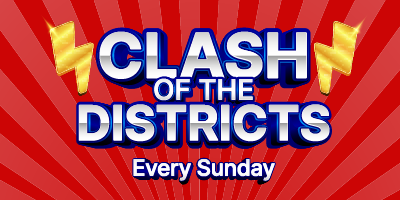


Once you become attuned to positions in bridge hands, you can be surprised to encounter them even though theretofore you’d never heard of them. In a previous column, I told you that I’d never before heard of Rubens’ Short Shorts. In my world BSs they didn’t exist. Now that I’d written about them, I saw them in the two sessions I played as I wrote the column. And just now, I completed Day 2 of the marathon NABC Robot Individual 72-board Tournament. I’ll give you the bidding puzzle first.
Not Vul vs. Vul you are the dealer and hold ♠QJ42 ♥AK863 ♦A5 ♣A10. I trust you open 1♥. If you open 1NT, you can continue reading because you’ll get to the quiz point anyhow. I have partners who open 1NT with 5-4-2-2 distribution and they lobby me to do the same, but this hand is too strong for that, I think. If you bid 1♥, partner bids 1♠; What now? If you open 1NT, partner bids 2♣, you respond 2♠; partner bids 3♠. What now? He might have passed 2♠ and you’d not be playing the game contract below, but a part score. Still, how to play?
I think the hand is strong enough to warrant 4♠, but if you prefer to be conservative and leave the contract at 3♠, you won’t get argument from me. Here are the two hands, single dummy style.
What do you think of this contract? No hand waving, please. Think about how to play this contract, with a club lead, no matter who is declarer, and its odds of success.
Here’s how I think to play the hand: win the club lead. Plan when things get tight to dump a club from North on heart King, but there’s no current rush for that. Hope for spades to split 3-2. Plan to draw two rounds of trump, if E-W allow me to get away with that. Then see if I can set up diamonds with one ruff—if they split 3-3. Then if diamonds have not split 3-3 and I have drawn only two rounds of trump, then leave the last trump outstanding and cross-ruff diamonds and hearts, making ten tricks with five trump tricks, two hearts, two diamonds, and one club. [I win the ♣A, lead to the spade King, which holds and back towards the SQJ. East takes his Ace and forces dummy with two clubs.] My plan requires:
That last bullet could be re-worded to say that the spades and hearts could have a so-called “5,7 short short”. [We hold eight cards in spades, so the remainder is five cards. We hold six cards in hearts, so the remainder is seven cards. Hence in the short short terminology, we refer to a “5,7 short short”. We learned that odd odd short shorts all occur about 40% of the time; odd even about 23% of the time; even even, about 12% of the time. ] Page 231 of Rubens’ book tells us that such a distribution of the cards occurs 40% of the time. So I can compute the probability of this contract’s succeeding at
50.9% = .678 x (.355 + .396)
= trumps 3-2 x (diamonds 3-3 OR [long hearts with long trump])
At the table, I can still do in my head: .70 x (.35 + .40) = 52+%. Back of-the-envelope, using rough probabilities for suit splits and odd, odd short shorts says the contract is worth bidding, single dummy.
I bid it and it failed: spades split, but diamonds did not, nor did the short short work. The long trump was with the short hearts. Down one for an 34% board; twenty-one declarers played four, down one. Eleven played four and made four or more.
Did knowing about short shorts affect my bidding or play? No. It did affect my morale because I computed that we’d reached a good contract. No overbidding.




Interesting bridge columns.........Your Mama would be so proud.......................
4S seems like a reasonable contract. I'd win the AC and play two diamonds, pitching a club on the third, turning the hand over to the defense to do their worst.